Jonathan Plotzker-Kelly, founder of Heliotrope San Francisco, has spent over a decade crafting high-quality, all-natural skincare products rooted in ...
Tom Wigginton: Vitruvian Fitness — A Personal Training Venture
Written by: Carolyn Young
Carolyn Young is a business writer who focuses on entrepreneurial concepts and the business formation. She has over 25 years of experience in business roles, and has authored several entrepreneurship textbooks.
Published on September 26, 2023
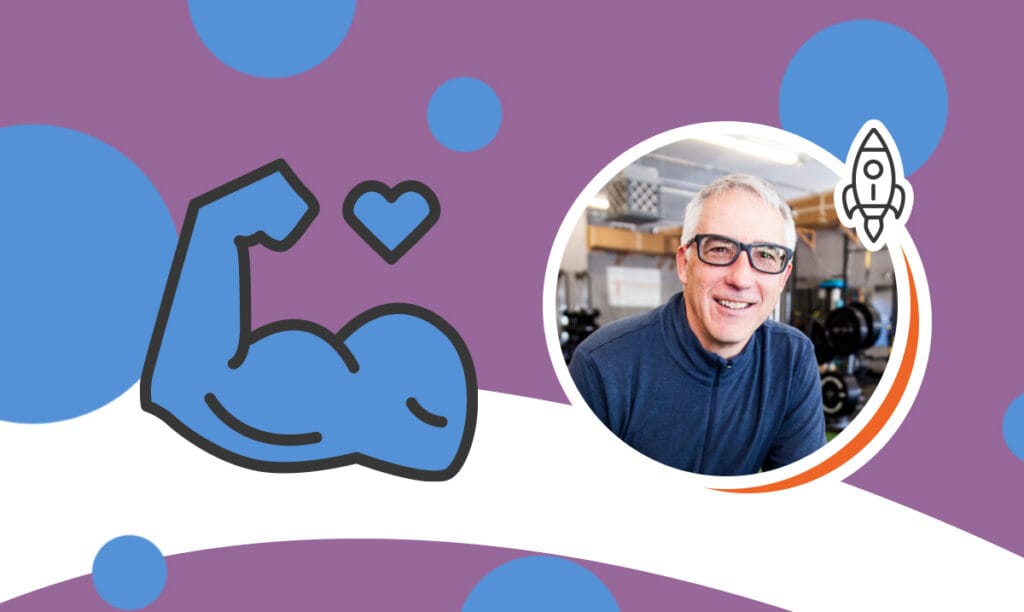
In today’s spotlight, we’re diving deep into the world of health and fitness with Tom Wigginton, the visionary behind Vitruvian Fitness. His transformational journey from a corporate sales job to creating an environment that prioritizes the well-being of individuals is nothing short of inspirational. Tom’s story stands as a testament to how life’s unexpected twists can sometimes lead us to our true calling.
Discover how a layoff, an insightful book, and a burning desire to make a genuine difference in people’s lives spurred the inception of a unique fitness enterprise that doesn’t just change bodies but lives. In our candid conversation, Tom delves into the challenges of running a business, the unique philosophy behind Vitruvian Fitness, and how he’s reshaping the way we approach fitness.
SBS – Can you share the story behind the formation of your business, meaning how everything started?
Tom – Yeah. About 15, 16 years ago, I had a job in corporate sales, and I got laid off, and I took that layoff a little hard. And I didn’t know what I wanted to do next. I had lots of opportunities to interview with companies in a very similar business, but I was a little bit burned out on that industry and that type of sales. So, I didn’t know what I wanted to do, so I spent a great deal of time in a gym, not surprisingly. I was on a rowing machine, rowing for an hour at a time, just trying to contemplate what I wanted to do with my life.
To cut to the chase, I read a book that was kind of like a career placement or a career counseling type of book, and it suggested — among many things — that I might enjoy being a physical therapist or a personal trainer or a high school football coach, or a teacher, or a writer, and just lots and lots of physically oriented teaching type of roles.
SBS – What is the name of the book? Is it psychology-based or something different?
Tom – Yeah, it’s based on the Myers-Briggs personality profile. So, rather than going back to physical therapy school — because I would have had to do too much education, redo my undergrad, apply to physical therapy schools, and it would take many years — I decided to become a personal trainer.
I did lots and lots of studying, and then I got a job at a big box gym as a personal trainer. That was a very unsatisfying experience because it was about just getting in as many members as we possibly could, selling them as many things and as many services as we could without really any genuine interest in helping them. And it was very, very much evident that they didn’t care. They just wanted people to buy lots of things.
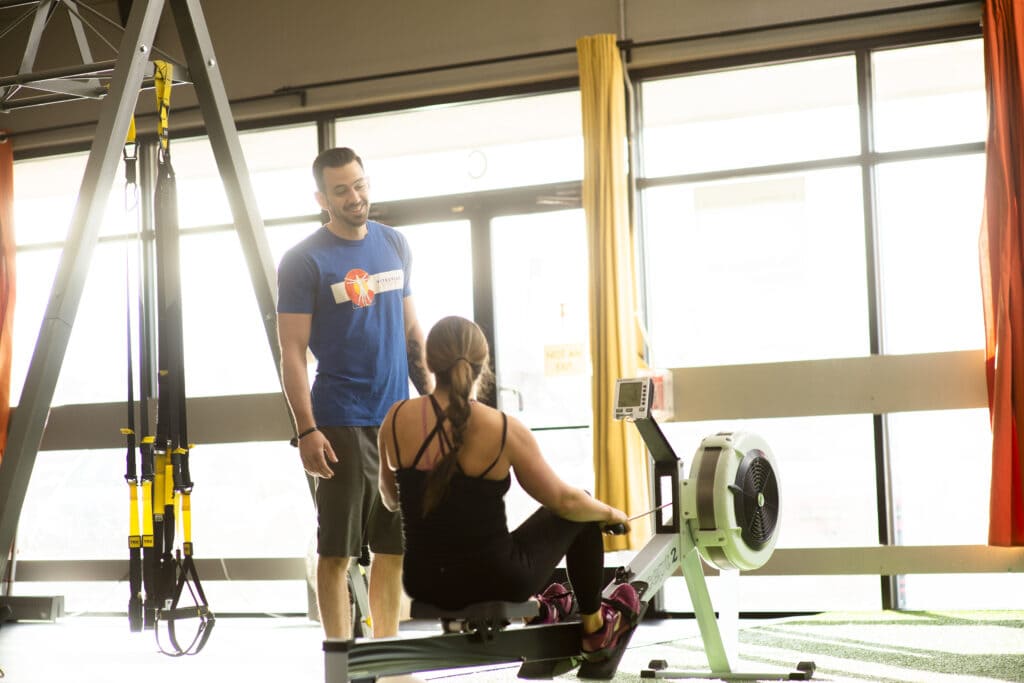
It was only about the money, and that was really offensive to me. So, after training in this environment for about two years, I decided I was going to go out on my own because I was an okay trainer, maybe good at the time. I thought I was great. Now, at the time, I wasn’t that great, but I had a lot of heart, and I wanted to make a difference in people’s lives.
So, after two years, I decided to go out on my own and start a training business. And so that’s kind of how it started. We started in a very small location in an upcoming trendy part of town, and things were good, but we ran out of space and needed to expand. And it was a good trajectory.
SBS – So, you were not laid off; you went voluntarily?
Tom – Yeah, exactly. And, when I was presented with the idea by the book that I would be good and happy at a career that helped people physically, I thought it was remarkably interesting that I went to solve my mental state by exercising. It’s connected.
It was new to me, though, I was very much about fitness and recreation. I skied, I rode my bicycle great distances, skied, hiked, fished, climbed, and I did lots of things like that, but I never trained. So, going to a gym and lifting weights could not have been more foreign to me at the time.
I knew that, as I began to exercise myself and learn about lifting weights and training with a purpose, that was how I was going to change and improve. When I looked back at my career in corporate sales, I realized there are a lot of people in my situation who would benefit. So I didn’t do it as a money-making opportunity but because I was genuinely going to help people change their lives.
SBS – What challenges did you face in the first initial stages of your business, and how did you overcome them?
Tom – Well, the biggest challenge that I had was that I understood how to train people, but I didn’t know how to run a business. When I started my business, I knew that I had to go to the Secretary of State and file my articles of incorporation. I knew that I needed to get an EIN from the IRS. I knew all those things. But when it came down to running a business, from marketing and sales and creating systems for customer service, for our facilities, for doing my accounting and bookkeeping, I didn’t have a clue what I was doing. So, I was making it up as I was going along.
In the beginning, you have ten clients, and then you can go on with the rest of your day. But then, as the business grew, there just weren’t enough hours in the day to take care of the business end of it and the client end of it. I was by myself at the time, and then I hired my first employee, and then I hired more. There were no issues with having employees, but every time we would scale up, there would be a whole bunch of new problems that I didn’t realize were going to be a problem.
That’s when somebody said, “You need to read the eMyth Revisited and learn about how you create systems and processes and standard operating procedures so that you can systemize the business.” So, little by little, I started making those systems and improvements to the business. I hired a bookkeeper and hired a cleaning company, and I had some people help me with marketing. Little by little, all these systems came into place, and things got better. And then, you know, you get bigger problems. Like, we now were too big for our space, and we had to try to find a new one, and then we were signing leases all over again.
It’s always something. I think that if I were to start a brand new business again, I would start with all of these systems.
SBS – When you found that one space and you opened it, was it hard for you to find clients and get people to come to your gym and to decide if you or your employees would train them?
Tom – As I said, I was working for this big box gym, and when I told the gym that I was going to open up my own personal training studio, they thanked me for my time and immediately terminated me that day, which I expected. But all of the clients that I had been working with were enjoying working with me. So, they didn’t quit that gym, but they did come in and train with me. I probably started with ten clients. And then, those ten clients gave me referrals, and the sign on the door brought in clients. We were on a very busy, popular street with lots of pedestrian traffic, so people would be curious.
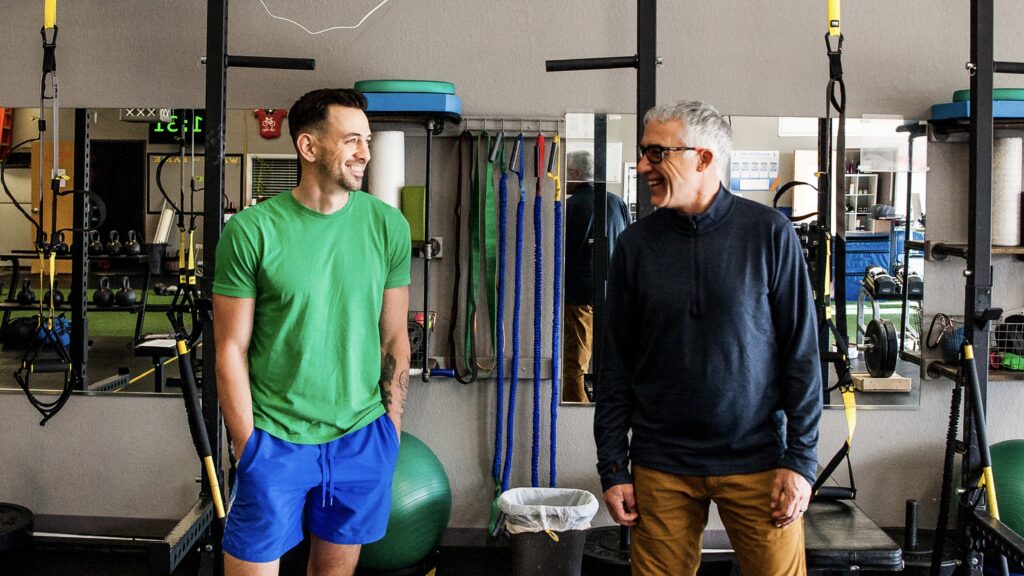
SBS – How do you differentiate your services in your market?
Tom – That’s a great question. I’d love to answer this one. So, the first thing is that we do what’s called functional training. And by functional training, we mean we’re going to help you move well and then get stronger. And as a result of those two things and the way we do that, you’re going to become better at activities of daily living, and however you live, your life is going to be improved by that.
So, for example, let’s say that you are 30-something years old and you like to ski and ride bikes and fish. By virtue of getting stronger and moving well, those activities, those sports, and those recreational activities are going to get better. You will become more athletic, you’ll have better endurance, you’ll have more strength, and so you’ll be able to do better at those things.
But let’s pretend, for example, that maybe you are 50 years old, where children now are in high school or getting ready to leave for college, and all of a sudden, you realize that you spent the last 15 to 20 years advancing your career, sitting behind a desk, and/or putting your children’s interests ahead of your own. And you realize that you don’t move well, you’re stiff in the hips, and you’re stiff in the shoulders, you’ve got low back pain. Things that used to come easily to you are really difficult now. So we help you reclaim some of your youth and then help you find something to do that’s fun.
So that’s what functional means. And then we could go to the next couple of decades where somebody is 65 or 75 years old, and now we’re going to be prolonging the quality of their life by helping them remain independent so that they need to rely on others less. You know, simple things like if you’re on a plane putting your suitcase in the overhead compartment, that’s something that becomes really difficult for people.
SBS – So you’re focusing on not just the body but on the quality of life?
Tom – And it’s not just from a strength perspective or a movement perspective. We’re changing bodies at the cellular level, which is going to make you more resistant to injuries and more resistant to disease. It is very well documented now that movement and exercise are medicine. They help prevent diabetes, they even help cure diabetes, and they help prevent cancers and neurodegenerative diseases. And it leads to positive thoughts as well. It cures depression for some people.
So that’s how we’re different in the market, but some people are in it just for the physique. They do it because they want to look pretty, they want big muscles, or maybe they want to compete in a bodybuilding room.
Some people are in it exclusively for weight loss, and that’s also good, but we think that weight loss is going to be a byproduct of other things, not our primary focus.
And then other people are in it exclusively to improve sports performance. Sports conditioning and those things are all great; they’re all wonderful other versions of exercising and coaching, but ours just starts at a little more foundational level and is long-term.
They have to commit because it is not something that will happen overnight. They will have to commit time and be prepared for the changes, which eventually are going to be good for them.
One more thing about this, since it’s a business conversation. The other aspect of the business that I believe makes this a better long-term business is that if I’m seeking out athletes who want to make the podium or the team or want a new contract. Whatever, that’s great, but then every season or every three to four months, I have to replace those clients because I’ll serve them well, and then they move on.
But the way that I work with my clients is to improve their lives by increasing their lifespan, health span, and quality of life. That’s going to be a much longer-term relationship, and so I might have the privilege of working with people for three, four, five, six years instead of three, four, five, six months. So with my retention, I get to have longer client relationships and more meaningful relationships, and in the end, more profitable relationships as well.
SBS – What does one average day look like when you work with clients like you do? When do you get up, and what happens at the end of the day?
Tom – This is the phase that I’m in, where I’m becoming less of the product of the business and more the owner of the business. Since the pandemic, I have been involved very much in the day-to-day. I was four to six hours in the training clients. And since things have kind of gotten more normal, I now have staff and day-to-day, I’ll spend a little bit of time on the floor with the clients, and then I’ll move into more of the administrative tasks. Sales and marketing-related activities, generally, and then a little bit of strategy time.
So that was that kind of the natural progression from when I was the trainer, and I was the bookkeeper, and I was the sales and marketing guy. I did all those things, but little by little, I started to be able to hand those tasks and duties off to either a third-party agency that would handle it or to employees, and so my role has become less tactics and more strategy.
I have a dashboard where I track a bunch of metrics that are important to the business, like the number of clients and the number of sessions that we’re coaching, and I track these things multiple times per week. I also check in with the numbers and the other metrics, like my monthly recurring revenue. I make sure we’re on track with the number of new prospects and the number of new trial offer conversions. There are lots of different KPIs that we just look at to make sure that we’re always tracking in the right direction. If they are great, we celebrate, and if not, I try to figure it out.
I have a big workbook that has my three-year plan, and I have a one-year plan, and then I break my one-year plan into issues and opportunities and then break that down into quarterly projects. And then, I have a weekly dashboard with KPIs that I track on a regular basis.
Everything has a different category, so I’ll have staff development projects, and I’ll have client experience projects, facilities, and finances, and so it depends on the day of the week what my focus is.
SBS – What made you decide to form an LLC for your business?
Tom – So, I formed an LLC since LLC offers limited liability protection and protects your personal assets. The state I live in recognizes that, but as far as the IRS is concerned, it’s a sole proprietorship, so there’s very limited protection of personal assets. But next year, we’ll be going to an S Corp for tax reasons.
When you’re taxed as a sole proprietorship, all profits show on your Schedule C, and my wife gets a W-2, and if we both have a good year, it puts us into a new tax bracket, which makes planning challenging. But we’ve reached a threshold where an S Corp makes sense, and we’ll both get W-2s, which makes it simpler.
It also creates that veil and more personal liability protection, so if heaven forbid, we had some major incident, and somebody decided they were coming after me, we’re protected.
SBS – How did you build your team? What kind of qualities do you look for, especially in your trainers?
Tom – In our case, our product is our people. So, the first thing that we look for is whether the person has the minimum level of technical education, certification, and experience. Do they know how to coach lifting weights? But it’s just at a minimum level because the way we interact with our clients is a little bit unique. I’m looking more for the quality of the individual and their ability to be empathetic with our clients, and to connect and engage, and essentially, just to be a good person.
What we do, it’s also very emotional, and it’s very it’s very personal because it’s personal training, right? So, we need to hire people who have the capacity to be personal, empathetic, sympathetic, motivating, and inspirational. We can teach coaching weightlifting and things like that, but I can’t teach you to be a good person.
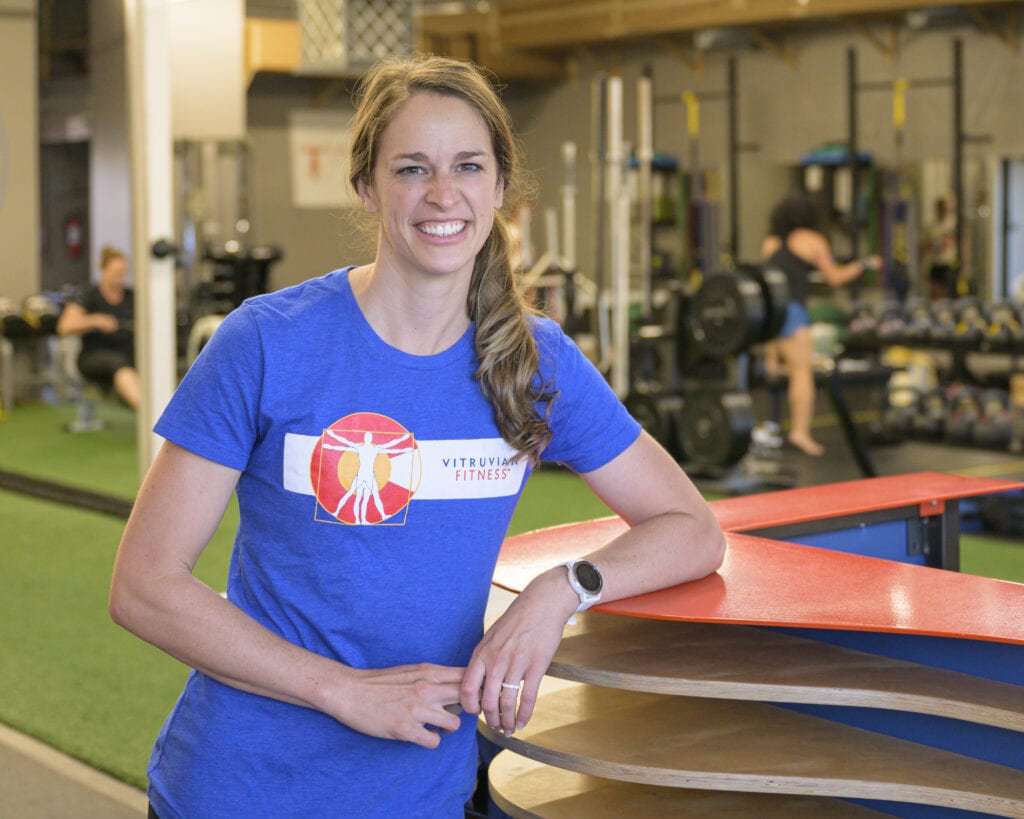
SBS – How have your marketing strategies evolved? Do you focus on social media or direct marketing? What are some of your key marketing strategies?
Tom – It’s a simple five-point strategy. We make ourselves available on our Google My Business page with reviews and have an organic online presence with our website. We also have our organic social media, where we’ll tell stories and share pictures of our members doing their thing. So, the online presence is one part, and then we have strategic partnerships with other healthcare practitioners, and we exchange referrals.
We also participate in events, like charity, from time to time, and we do some paid advertising. We also encourage our clients to tell their stories on social media and to friends who might benefit from our training.
SBS – What advice would you give someone considering starting a small business?
Tom – I would say that, before you open your doors, or very soon after, get a business coach. In our case, I had to cover so many bases and play so many different roles, from building the client experience, the staff experience, finance, sales, and marketing — all on a daily basis. It’s impossible to keep track of all of them, so you need somebody to teach you and hold you accountable for the things you need to do. If you try to learn it all yourself, you’ll likely be out of business by the time you understand it all.
SBS – If you had the chance to start another business, would you choose the same structure again, meaning an LLC?
Tom – I would work with my accountant, who could advise me on what would be the best strategy and what would be the best place to start. I would take their advice.
SBS – What are your future goals that you’ve set for yourself? You said you have a one-year plan and a three-year plan.
Tom – So, we’re doing well right now with what we’ve created, but we have unrealized capacity in our business as it is now, so our goal for the next year is to begin saturating that capacity. That would take us about a year and a half if we’re going at this growing rate. And then, at that point, I just wanted to decide, okay, do I execute an exit strategy? Or do I double down and open up a second location and then a third location? And then, if my systems are in place, maybe I can open up three or four more in three or four years, but goal number one is to saturate our capacity and then maybe expand.
If you want a deeper dive into the community he’s built, check out Vitruvian Fitness on Facebook and Instagram.
Subscribe to Our Newsletter
and gain insider access to cutting-edge business insights and trends.
Featured Resources
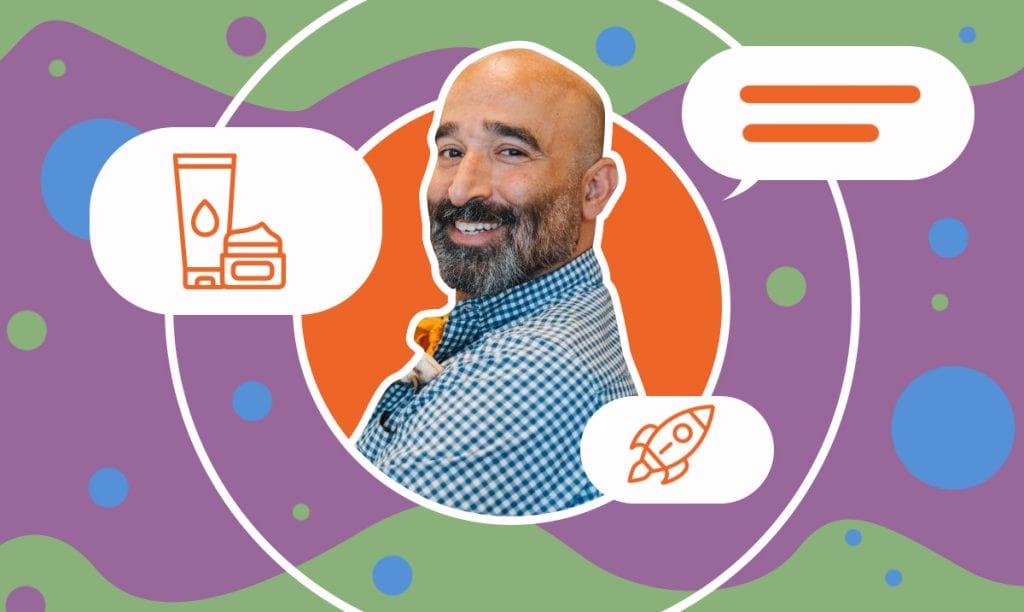
How a Retail Pro Turned Skin Sensitivity Into a Skincare Brand
Published on April 3, 2025
Read Now
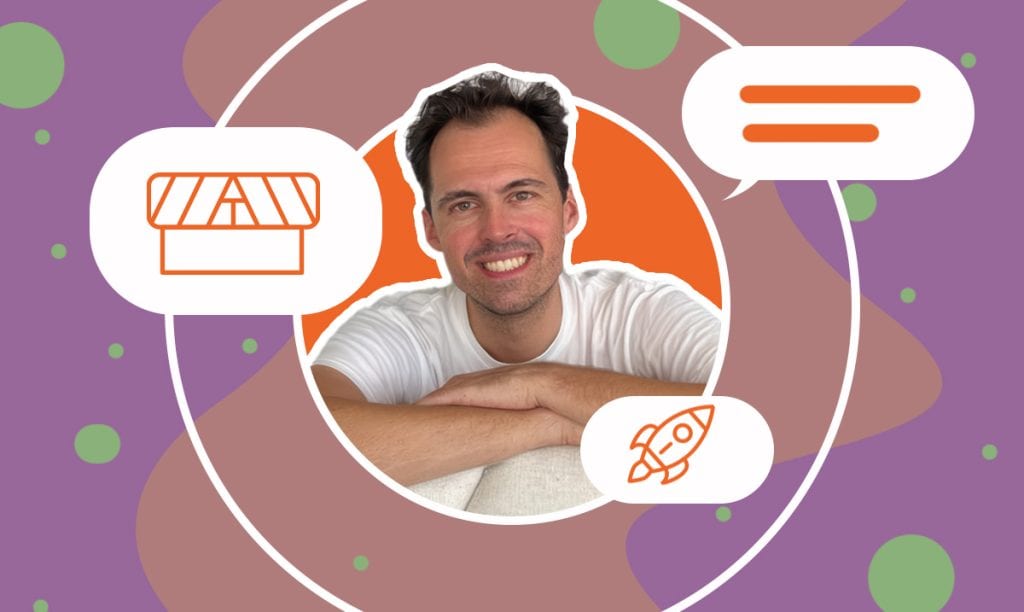
How AirTulip Improves Sleep Quality and Eases Allergies with Clean Air
Published on February 27, 2025
Imagine waking up feeling truly refreshed, breathing air that is 1,000 times cleaner than what traditional purifiers can offer. That’s the promise ...
Read Now
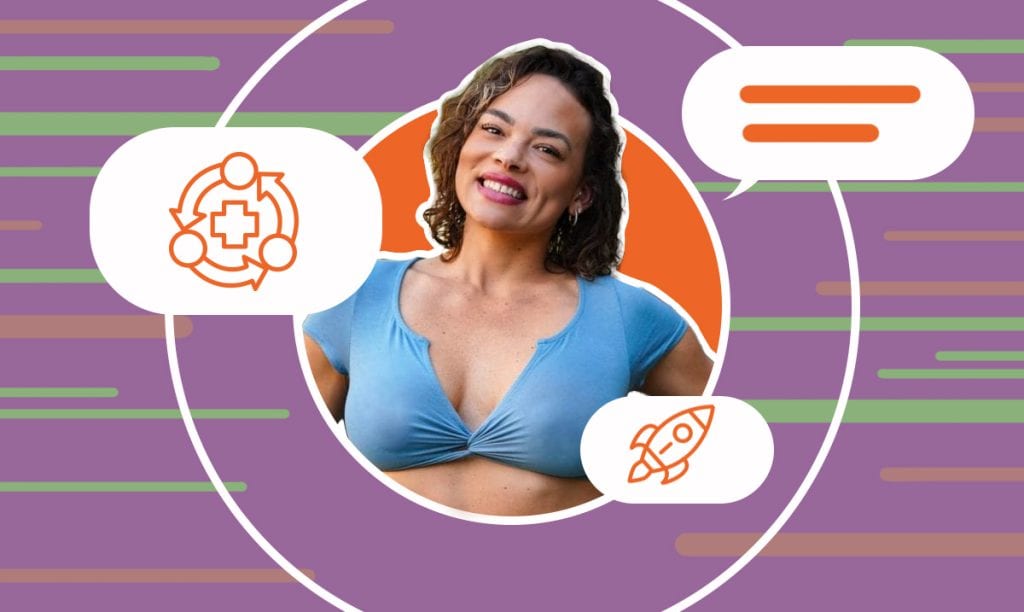
How Lin Mezori Is Transforming the Recovery Industry
Published on January 2, 2025
Lin Mezori, the matriarch behind Pure Recovery, has transformed the wellness and recovery space with her vision of blending innovative therapies and ...
Read Now
Comments